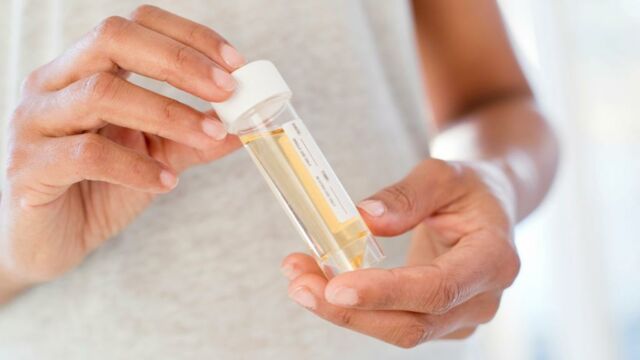It is understandable for some to be a bit hesitant when it comes to the new mRNA vaccines, after all, despite years of research this type of technology is still very new to the general public. However, scientists have widely recognised that they are very safe and it isn’t just a ploy for Bill Gates to implant a microchip into your arm.
Discover our latest podcast
However, one London mum just couldn’t be convinced and believed that drinking urine would be more effective against the virus.
Mum and children drink own urine as a cure for covid
The woman in question belived that the COVID vaccines had been compromised by Bill and Melinda Gates and would be ‘dangerous’ for her family. Instead, the mum told Healthwatch Central West London that she much preferred to opt for ‘traditional cures’.
The London mum admitted that she had come across the advice to drink her own urine from a video that her friend had shared with her over WhatsApp. The mother and her children proceeded to follow along with the ‘urine therapy’ for a total of four days. However, it is not known what caused the family to stop.
The efforts have now been documented as part of Healthwatch’s report on coronavirus misinformation which is being made in collaboration with the French African Welfare Association (FAWA).
Olivia Clymer, the CEO of Healthwatch Central West London and co-author of the report stated that residents need to be informed against the masses of COVID misinformation and fake cures:
We were told of a stigma associated with contracting coronavirus, and also of the fake remedies and conspiracies shared via WhatsApp. This, coupled with a lack of trust in ‘official’ channels of information, presents a problem that needs highlighting and addressing.
COVID misinformation a sign of a deeper problem
Healthwatch and FAWA have teamed up to interview over 100 people about their experience with life during the pandemic, with an additional focus on Black and minority communities.
Those interviewed expressed the social stigma that exists for those who have had a family member die from the virus. The report also highlighted that the digital exclusion that many have faced as more and more services move online. The report revealed:
Unfamiliarity with technology, or a lack of access to it, can have knock-on effects.
Others who were interviewed also pointed out the ‘stress, isolation and uncertainty’ when it came to using technology. A member of LEGS, an exercise group made for those affected by a stroke or neurological condition, explained: ‘I am not young, so using all this new technology is very stressful for me.’
This kind of information supports the idea that digital exclusion can contribute to the consumption of COVID misinformation as some may not be able to access information or may mistake unreliable resources as fact. A study from the International Journal of Environmental Research and Public Health further adds that social media has been a huge contributor to the spreading of misinformation when it comes to coronavirus:
Social networks have proven to be the most fertile ground for the spread of false facts. They offer a great space for profiles and pages that are created with the precise intent of generating and spreading fake news.
How to spot fake news:
Due to the increase in fake news during the COVID pandemic, UNESCO Bierut has released some tips on how to spot fake news:
1. Consider the source:
Click off the article and check what kind of content the website publishes its mission and their contact information.
2. Check the author:
Do a search on the author and check if they are credible and real.
3. Check the date:
Old news articles that have been republished are not always relevant to current events.
4. Check for biases:
Consider whether or not your own beliefs could affect your interpretation of information.
5. Read beyond the headline:
Headlines are often a dramatisation of information in order to attract readers.
6. Supporting Sources:
Check if an article contains any relevant sources or if other reports exist online
7. Is it a joke?
If an article sounds a little too ridiculous then it may be satire, it’s best to double-check the website.
8. Ask the experts:
If you aren’t sure about information, you can check on a fact-checking website or even ask a librarian or doctor for help.















